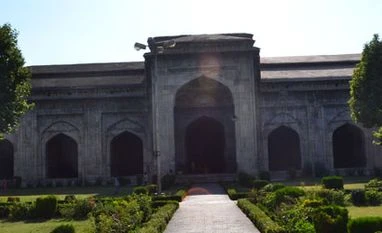Standing outside the Khanqah Shah-i-Hamadan by the banks of the Jhelum in Srinagar is akin to being under the spell of a hypnotist. The wooden structure with pagoda-like roofs looked like a pleasure palace built in the Forbidden City in Beijing, not a mosque in Kashmir at all. The exterior is the most spectacular turquoise — so unimaginably vivid that it should be a colour with its own name. The inside is a papier mâché jewel box and another riot of colour. If someone had told me that the strobe lights of a discotheque were playing tricks on my perception of its opulent interior, I would have believed them.
My first visit to Srinagar was full of surprises — none more hallucinatory than the visit to the Shah-i-Hamadan. It’s named for a Sufi religious leader, Mir Sayyid Ali Hamdani, who fled persecution in Iran. This explains perhaps the colours of the mosque and its unusual structure, which has a simultaneously Persian and Chinese look. Hamdani’s disciples are reputed to have brought with them the skills that gave the world the renowned Kashmiri carpet. Incredibly, his followers are even credited with introducing India to the pashmina.
Pathar Masjid
My first visit to Srinagar was full of surprises — none more hallucinatory than the visit to the Shah-i-Hamadan. It’s named for a Sufi religious leader, Mir Sayyid Ali Hamdani, who fled persecution in Iran. This explains perhaps the colours of the mosque and its unusual structure, which has a simultaneously Persian and Chinese look. Hamdani’s disciples are reputed to have brought with them the skills that gave the world the renowned Kashmiri carpet. Incredibly, his followers are even credited with introducing India to the pashmina.
)